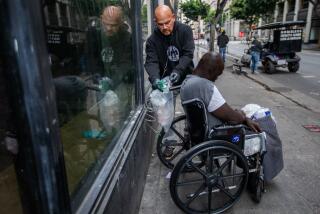More on Bystander CPR
- Share via
The article by Allan Parachini will, unfortunately, I fear, harm efforts to increase bystander CPR training--a program that has saved many thousands of lives.
As founder-chairman emeritus of the Writers Guild of America, West’s CPR Program, a nearly eight-year volunteer CPR instructor for the American Heart Assn., recipient of its Exceptional Service Award, and the individual whose suggestions led to a National CPR Awareness Week and the forthcoming Los Angeles CPR Awareness Week (Oct. 20-26, 1986), I am in a position to know, personally, something about the effectiveness of bystander CPR. I will offer just two examples of the many I know, in which lives were saved through such cardiopulmonary resuscitation.
In Malibu, a 7-month-old infant fell in a Jacuzzi. The frantic mother sought the assistance of a neighbor, Madeline Ehrman, wife of entertainment attorney Richard K. Ehrman. The baby had neither breath nor heartbeat and had turned blue from anoxia. Mrs. Ehrman, trained through our Guild CPR program, told the mother to phone for the paramedics while she administered CPR. “One of the greatest thrills of my life was when that baby started breathing,” said Mrs. Ehrman. The victim was hospitalized for only one night and is alive and in perfect health today.
Actor and ex-Marine Ted Jordan, a neighbor of mine, claimed I “nagged” him into learning CPR more than four years ago. Not long after he had taken the Heart Assn. Heartsaver Course, he emerged following the fifth race at Santa Anita to find a 64-year-old Los Angeles woman had collapsed in the parking lot, while a small group of people stood helplessly about her. Jordan discovered the woman was clinically dead, without breath or heartbeat. He urged someone to hurry to the phone a quarter of a mile away to notify the paramedics, while he administered CPR. Because of the heavy traffic, Jordan had to administer CPR for over 20 minutes before the paramedics arrived and were able to defibrillate her heart. (The chief purpose of bystander CPR is to prevent clinical death from becoming biological death with irreversible brain damage before Emergency Medical Support can arrive with defibrillators and other equipment).
As for defibrillators, more of them may well be necessary as critics claim, but they are useless once there is irreversible brain damage, and it is to prevent this condition that bystander CPR must be administered in under four to six minutes and the sooner the better, so that defibrillation is effective.
I only hope the public has read the Times article to the end and is aware that questions about bystander CPR’s effectiveness to combat America’s No. 1 killer, heart attack, are raised by a very small minority of researchers, using parochial data not applicable nationally.
In a letter to me from Washington dated Nov. 22, 1985, Edgar C. Good, an American Red Cross vice president, mentions “our efforts to train at least one member of each household across America in this life-saving technique (CPR).” That’s the bottom line.
MORT R. LEWIS
Marina del Rey


